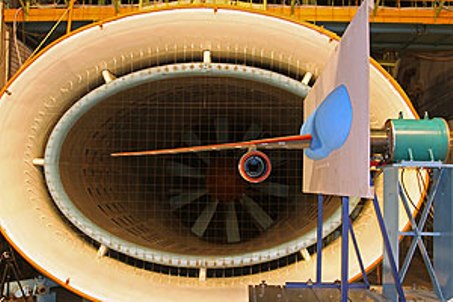MS-21 prime contractor Irkut is performing wind tunnel tests on the wing/engine combination for the new family of aircraft in the 150-212 seat range in development by Russia's United Aircraft.
The work, carried out at the Central Aerohydrodynamic Institute (TsAGI) in Moscow, includes a subscale wing and engine combination used to determine critical flutter velocity as a function of engine pylon rigidity, aileron input rate and fuel loads.
The wing section, built by TsAGI, was outfitted with miniature accelerometers and strain gages to record wing mode shapes and bending and torsion loads. The data will be used to update the aircraft mathematical model to better design against flutter and other aeroelastic phenomena on the full-scale aircraft, says TsAGI.
 |
|---|
| ©TsAGI |
Wind tunnel tests were completed in October at TsAGI for the aircraft's high-lift devices during take off and landing conditions. Also in October, TsAGI acousticians completed experiments on a system of "mini-cowls" on the nacelle nozzle that officials say "exceed by twice" the efficiency of currently available systems. Landing gear and cabin internal noise were also studied.
Irkut has not yet announced winners of three major subsystem selections that were set to be completed 1 November. Competing are Pratt & Whitney and Rolls-Royce for the engines, Rockwell Collins and Russia-based Avionica for the avionics and Aviapribor-Holding, Goodrich and Moog against Liebherr for the integrated flight control system.
The airframer has already selected vendors for supporting systems, including Russian landing gear provider Gidromash, Hamilton Sundstrand for the auxiliary power unit, Intertechnique for the fuel systems and Eaton for the hydraulics.
Irkut says the 150-passenger MS-21-200 will be certified first, in 2016, followed by introduction of the 181-passenger MS-21-300 and 212-passegner MS-21-400.
Source: Air Transport Intelligence news























